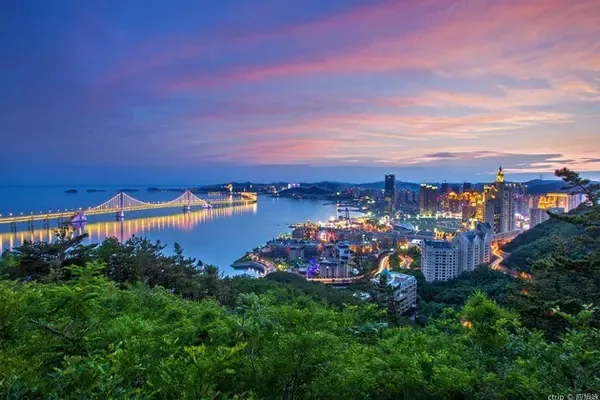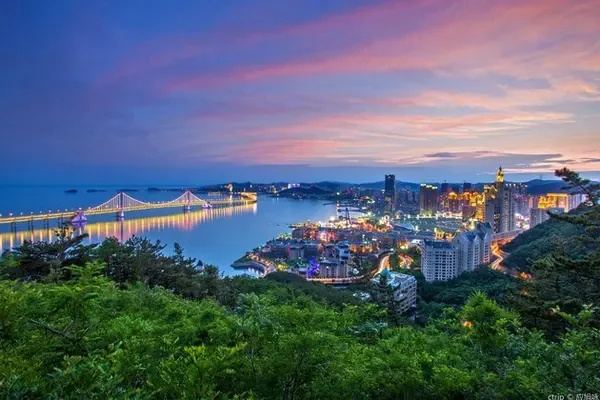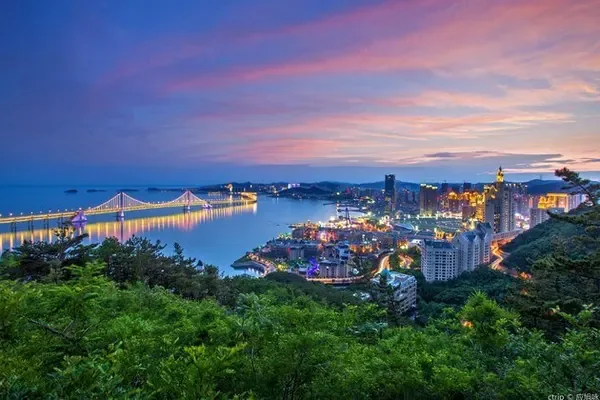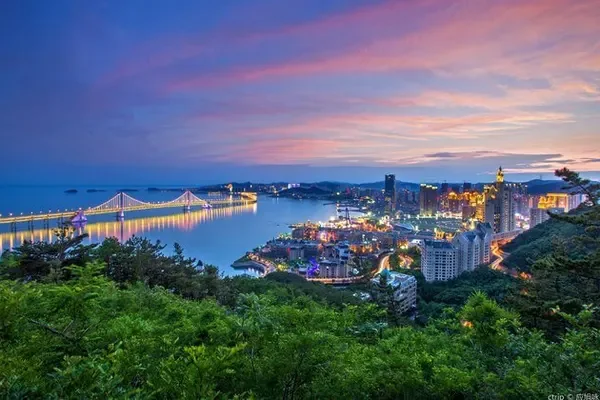【origin】
"Turpan has an altitude of -154 meters, the second lowest land in the world." This was my first impression of Turpan through geography textbooks when I was in junior high school.


For a long time, I have longed for and longed for Turpan, and I want to see this place where the melons and fruits are fragrant, go to Turpan to see the singing and dancing Uyghur people; How does the place maintain the oasis on this vast Gobi, and all of this is inseparable from the protagonist of our story today-Karez, Xinjiang-the "underground mother river" in Turpan. It is the nourishment of Karez that turns the desert into an oasis.


【About Xinjiang】
Xinjiang is located in the northwestern border of China, accounting for 1/6 of China's total land area and bordering eight countries. Xinjiang has the world's second highest peak at an altitude of 8,600 meters, and the lowest depression in China, which is 154 meters below sea level. There are rivers that flow for thousands of miles, grasslands with vast expanses of blue waves, and bizarre Gobi illusions, mysterious desert wonders, and " Wear cotton-padded jackets in the morning, gauze in the afternoon, and eat watermelon with the stove in your arms.”


Xinjiang is divided into north and south, and the Tianshan Mountains are the middle line. The north of Tianshan Mountain is called Beijiang, and the south of Tianshan Mountain is called Nanjiang. The northern and southern borders are completely different styles! Northern Xinjiang is dominated by natural scenery, with alpine grasslands and distant herdsman culture, as well as galloping horses and unique Xinjiang-specific singing and dancing. Southern Xinjiang is dominated by history and culture. Here, you will see the perfect combination of desert and Gobi, as well as diverse and simple agricultural civilization. Of course, there is another way to divide the southern Xinjiang area south of the Tianshan Mountains, with Urumqi as the center line, and Turpan and Hami are merged and divided into Eastern Xinjiang.


【Famous Karez】
Turpan, also known as Huozhou, got its name because of its hot climate. I have heard of his name for a long time, but I have never seen it in person.


In Wu Chengen's "Journey to the West", there is a chapter dedicated to the story of Tang Sanzang who was blocked from learning Buddhist scriptures from the Flame Mountain in Turpan, and Monkey King who borrowed the banana fan three times. A myth closely connects the Flame Mountain in Turpan, Xinjiang with Tang Seng, Monkey King, Princess Iron Fan, and Bull Demon King, making this Flame Mountain located in Huozhou a uniquely magical mountain in the world.

How did Turpan, located on the Gobi, become an oasis? This is inseparable from the moisture of Karez.


Karez is composed of four parts: underground canal, vertical shaft, open channel, and dam (reservoir). The main body is hidden deep under the surface, and it is divided into water collection section and water delivery section. Karez well in Xinjiang not only has a long history, but also is comparable to the Great Wall and the Beijing-Hangzhou Grand Canal, and is known as the three major cultural projects in ancient China; it is also known as the three major water conservancy projects in ancient China alongside Dujiangyan in Sichuan and Lingqu in Guangxi.


Xinjiang Karez is——
Source of Turpan and Hami Oasis
The underground mother river of Turpan and Hami people
The crystallization of the wisdom of the working people in Turpan and Hami, and the monument of tenacious struggle


It is a model of harmonious coexistence between man and nature.
No amount of praise can describe the greatness of Karez
...
[First experience of Karez Paradise]
To learn about this greatest water conservancy project in human history, I strongly recommend that you go to the Turpan Karez Paradise of Xinjiang Karez Research Institute to take a look. When you go deep into this place, you will know that the ancient Turpan working people took advantage of the unique terrain of the Turpan Basin to draw groundwater out of the ground without using any power or resources to irrigate farmland and sustain life, turning this desert into an oasis.


Karez Paradise is located in Yaer Village, Yaer Town, Gaochang District, Turpan City, with convenient transportation and geographical conditions. It is only 3 kilometers away from Turpan Jiaohe Airport and Turpan North High-speed Railway Station. After getting off the train or plane, take a taxi, which is the distance of one foot of the accelerator. After visiting Karez Paradise, if you want to go to the center of Turpan, it is only 6 kilometers away.


Karez Paradise is also extremely friendly to friends who travel by car. The large parking lot of Karez Paradise, which covers an area of 16 mu, can park 230 vehicles of different sizes at a time. The kind thing is that this parking lot is completely free for tourists. After parking the car, enter the scenic spot through the underground pedestrian passage, which is cool and safe. The underground pedestrian passage is also specially equipped with lifts for the disabled and the elderly, so that people with inconvenient legs can travel conveniently.


Karez Paradise has two gates, the old and the new, and now the new gate is used; the old gate has been left unused, and has been turned into a scene of Karez Paradise, witnessing the changes of the years. The new gate of Karez well, with unique and novel shape, symbolizes the great pioneering work of the Turpan people in digging Karez well with industrious hands and leading the water from the deep underground to the surface. It is the embodiment of the infinite wisdom and fearless labor spirit of the working people.


The old gate of Karez Paradise. There is a hand-operated pulley at the highest point of the gate. Below it is the first shaft of Karez. The blue stripes on both sides of the gate symbolize the culvert of Karez. The vertical semicircle seen in the middle of the gate symbolizes The Shaft of the Karez.


The three ancient Karez wells flowing above and below ground also make the Karez Paradise in summer a beautiful environment surrounded by trees, lush greenery, pastoral-style leisure courtyards and combined exquisite and atmospheric leisure grape corridors. There is no feeling of "Fire State" in the scorching sun here, and the gurgling flow of the Karez open channel makes the blowing wind turn into a refreshing cool breeze.


After entering the scenic area through the new gate, you can see that the wooden bed with obvious Uyghur characteristics is placed on the Karez open channel. Turpan is hot in summer, so the bed is placed on the Karez open channel. The cold Karez water that just flows out of the ground comes from Flowing through the bottom can play a role in natural cooling.


Next to the wooden bed stands an "Aputuwa" of Karez Paradise. It is 4 meters high and made of 100 kilograms of brass. It is currently the largest Aputuwa in Xinjiang. "Aputuwa" translated into Chinese means washing hands pot.


There is a mulberry poplar tree with roots in Karez Paradise. A poplar tree and a mulberry tree naturally grow among the green weeping willows and peach trees, but the roots are magically gathered together. Seeing this strange tree, I can't help but marvel at the magic of nature. Isn't "Sang Yang Liangen" a portrayal of "National Great Unity"?


If you come at the right time, don’t miss the two opening ceremonies of Karez Paradise in the morning and noon. The hospitable, singing and dancing employees of Karez Paradise are dressed in national costumes and present a unique Turpan song and dance performance for tourists and friends.



The water in Karez is originally the snow water and precipitation of glaciers on the Tianshan Mountains. The outlet of Karez Paradise Yingkarez (English: Uighur means "new") and the opening experience area of the open channel are the first close contact points for tourists and Karez. There are three Karez wells flowing through the Karez Paradise, all of which were excavated in 1700 and have a history of more than 300 years. Here you can visit the outlet of Yingkaner well and the open channel more than 100 meters long. The ancestors drew water from the water outlet in the form of excavating the underground canal of Karez. The local peasants generally live in places on both sides of the open channel where water is conveniently drawn and around Karez dams, thus forming small oases.


【Kanat Paradise Museum】
In Karez Paradise in Turpan, if you want to truly understand the history, culture, inheritance and protection of Karez, it is recommended to stop and take a look at the Karez Paradise Museum, so that you will strengthen your understanding of Karez.


The Karez Paradise Museum displays Xinjiang Karez distribution maps, satellite images, aerial photos, tools for excavating and maintaining Karez, dynamic models of Karez longitudinal sections, Karez culvert orientation method display, living utensils and other collections of cultural relics. Walking in the Karez Paradise Museum, touching it with your hands and feeling it with your heart, you will sincerely marvel at the greatness of this water conservancy project.


Karez wells in Xinjiang are mainly distributed in Turpan and Hami, with a maximum of 1,784, 172,367 shafts, and an annual water output of 858 million cubic meters at its peak. The total length of culverts is 5,272 kilometers. The number of Karez wells in Xinjiang is largest in Turpan. In the heyday, there were as many as 1,237 in Turpan alone!


Through the dynamic model of the longitudinal section of Karez, it can be seen that the northernmost part is the Tianshan Mountains in the north, the Flaming Mountains in the middle, and the Turpan Oasis in the south, and then you can reach the second lowest land in the world-Aiding Lake.


Tianshan area is rich in precipitation, and precipitation and snow water leak in the alluvial fan area in front of the mountain to form a rich orographic underflow. Due to the topographic conditions of the north and south, the underground underflow flows southward. The barrier effect makes the groundwater level rise, part of the undercurrent emerges from the surface in the form of spring water in the oasis north of the Flame Mountain, and the other part of the underflow seeps downstream through several canyons of the Flame Mountain, forming a rich underground water source in the south of the Flame Mountain.


Bogda Peak in Tianshan Mountain is 5,445 meters above sea level, and Aiding Lake, the lowest point in Turpan Basin, is -154 meters above sea level. Our ancestors used their wisdom and hard work to invent Karez wells according to the topography and hydrogeological conditions of the basin, which led the groundwater out of the surface without any power, and solved the problems of production, domestic and ecological water use. The huge height difference provides unique terrain conditions for the excavation of Karez.


Karez is composed of vertical shafts, culverts, water outlets, open channels and dams, and the culverts are further divided into water collection sections and water delivery sections. Since the slope of the culvert is smaller than the slope of the ground, the water will flow out of the ground.


The part of the channel from the water outlet of the Karez well to the dam is called the Karez open channel. The dam is used to store water and heat up the water. When the gates of the dam are opened to irrigate crops, the flow and velocity of water increase and the irrigation time is shortened.

[The essence of Karez Paradise in the section display area of Karez Underground Canal]
In the Kanerjing Paradise Museum in Turpan Karez Paradise, there is a spiral passage that connects the underground culvert display area 10 meters below. There is a shaft next to the revolving passage, through which you can see the gurgling underground water system.


In the underground culvert display area, you can visit and appreciate the original appearance of the 100-meter-long culvert and shaft. There are two best photography spots on the culvert section. This is the core part of Karez Paradise, and it is also the greatest water conservancy project and understanding of Karez. A good place to take pictures and check in.


The Karez well connected by the section of the culvert is called Miyimu Bay Karez Well, with a total length of 11 kilometers, 440 shafts, and the depth of the first well is 75 meters. The current annual average flow rate is 94 liters per second. This well was passed down to Miyim Bai by his father, so it was named after him.


The water quality of Miyimu Baikar well meets the national drinking water standard and can be directly drunk. Above the water outlet experience point of this Karez well, there is currently the largest dome building in Xinjiang, with a diameter of 24 meters and a height of 21 meters. The skylight at the top symbolizes the karez shaft, and the surrounding row of windows symbolizes the karez culvert. It is decorated with the traditional Uyghur architectural style pattern, named "Yingshui Big Dome". The shopping area under the dome of Yingshui is filled with all kinds of exquisite tourist souvenirs.



After walking out of the culvert display area, you will pass a grape drying room. The Grape Drying House is a unique building in Turpan, and its appearance is a honeycomb-style adobe house. The famous Turpan raisins are dried here in a natural way. The climate in Turpan is dry and hot, and the small holes on the walls of the drying room are ventilated smoothly. The wooden poles used for hanging grapes are called "Tikan" or "Chaka" in Uighur. The grapes hanging on "Tikan" do not directly bask in the sun. Instead, it is dried in the shade, so it is green and sweet, and the drying time takes about 30 days.


Passing through the grape drying room is the 100-meter grape corridor. The vines of the grape corridor are covered with a variety of crystal-like grapes, including seedless white, horse milk, pearl red, Haloxylon and other grape varieties. Walking along the small grape corridors on both sides, you can directly enter the vineyard. There are sculptures of Karez craftsmen hidden in the grape corridor, with different images and lifelike images. It is very fun to take photos with these sculptures here.


In a few days, when the grapes in Turpan are ripe, while visiting Karez Paradise, while blowing the cool summer wind, eating a mouthful of sweet grapes, let the greatest project of mankind witness the miracle of turning the desert into an oasis, think about it It's all a happy thing.


【Turpan Cuisine】
Chinese food can be simply summed up as "spicy in the east, sour in the west, sweet in the south and salty in the north". The food of each place has its own characteristics in its bones. If you want to understand a place, you can start by understanding the local food. It is a wonderful journey. If you have more food, it will definitely make this journey more colorful.


Xinjiang cuisine is always addictive. Every time I come back from Xinjiang, I feel a sense of happiness that I have gained three catties again. There are not only delicious and cheap Xinjiang ramen that can be refilled endlessly, the side dishes are both meat and vegetables, there are also delicious and unique large plate chicken, roasted whole lamb, mutton skewers, grilled buns, and sweet fruits and vegetables. The sweetness of Karez well water.


Turpan, like Urumqi, is located in the sixth east time zone, and Beijing is located in the eighth east time zone, so there is a 2-hour time difference between Xinjiang and most cities in the mainland. At ten o'clock in the evening Beijing time, the sun in Turpan has just set. At this time, the lights in Turpan have just come on, and the nightlife with a lot of people has just begun.


At this time, you might as well go to the Turpan Night Bazaar to taste a collection of North and South delicacies. Turpan Grapeland Night Bazaar is a good place to relax and enjoy the cool air, and adults and children can find their own fun. While tasting delicious food and enjoying singing and dancing, it also deepened the understanding of this hot land.


【Tips】
?best time to travel
July-September is the best time to travel in Turpan. If you want to feel the temperature of Turpan’s "Fire State", go in June-July; if you want to have fun, eat well, and see the best scenery, go in September. It is the time when the melons and fruits are ripe and on the market.
?Dress Guide
The annual average temperature is 14°C, and the average summer temperature is around 30°C. The annual average temperature is 99 days with hot weather above 35°C, and the average is 28 days with hot weather above 40°C. The summer in Turpan is long, with an average of 152 days. The change between morning and evening is not obvious. It may be a little cold in the morning, but it will be hot at noon. Because the climate is extremely dry and the temperature difference between day and night is huge, there is no sense of stuffiness. The lowest temperature in winter is minus 17-19℃. In addition, since Turpan is in the basin, you don't have to worry too much about getting sunburned, but you still need to prepare a sun hat, sunglasses and enough moisturizer.
?language
Turpan is dominated by Uighurs, accounting for 70% of the total population, followed by Han Chinese, accounting for 23%. At the same time, because it is close to Urumqi and has rich tourist resources, there are many tourists who come here every year, and most of them can communicate in Mandarin.
?transportation
Turpan Karez Paradise is located in the northwest of Turpan City, about 6 kilometers away from the city center. You can take the tourist bus 1, 101, 102 to get there or charter a car.
? Tickets
Adult tickets are 40 yuan.
?Opening hours
08:00-20:00 (peak season April 21-October 20)
10:00-18:30 (October 21st-April 20th in the off-season)
【About prevention and control】
Due to the prevention and control of the epidemic, you must have a valid nucleic acid test certificate within three days before you can leave the station when you arrive in Turpan. If you have not done a nucleic acid test before departure, you can do a nucleic acid test in Urumqi before heading to Turpan. Free nucleic acid testing can be done in any hotel in Urumqi, and the test results are available within 24 hours, and the small program can be checked. If you want to get the results quickly, you can go directly to the hospital for testing at your own expense. Basically, the results can be obtained within 8 hours.



The epidemic prevention and control in Xinjiang is strict. Most areas in Xinjiang need a nucleic acid test certificate within three days. The most important thing is that there should be no epidemic problems in the departure place and itinerary code, otherwise it will be difficult to move forward. This Xinjiang itinerary is only a part of leaving the station from Turpan, and I have collected 3 nucleic acid test reports in two days.
【Write in the back】
The warm and hospitable Xinjiang people who are good at singing and dancing, the Karez well, which has deep merits and fame, the unique charm of folk customs, and the characteristic local cuisine, all left a deep impression on me, satisfying my sense of sight, hearing, The yearning for touch and taste.


An unforgettable feast, engraved in my mind, traveling thousands of miles, just to meet, everything is worth it.



